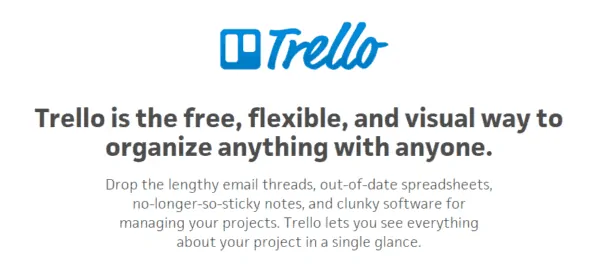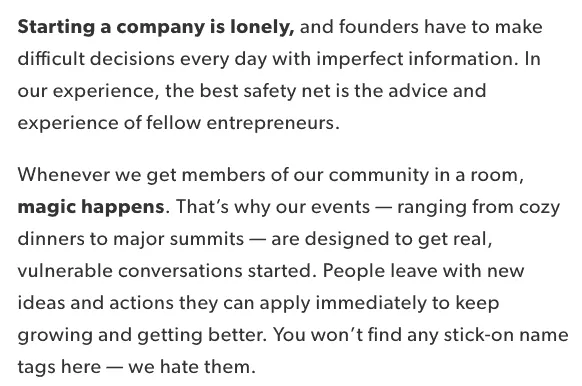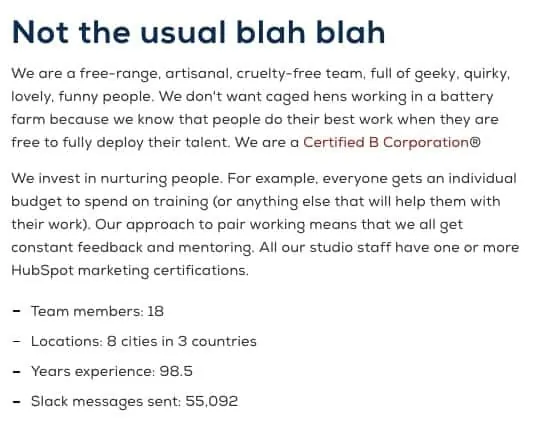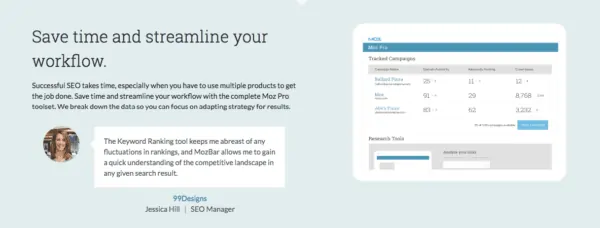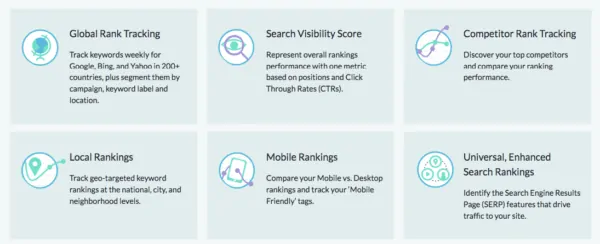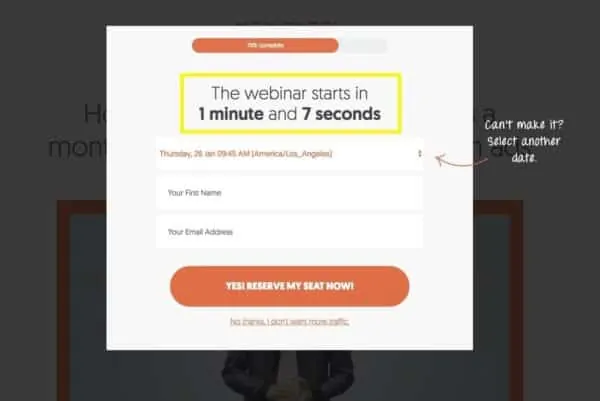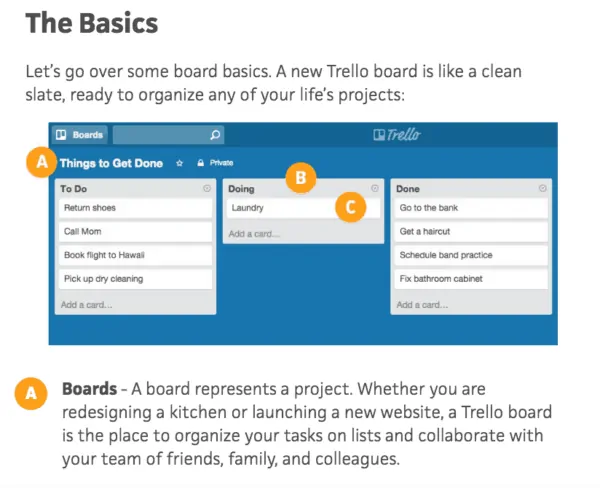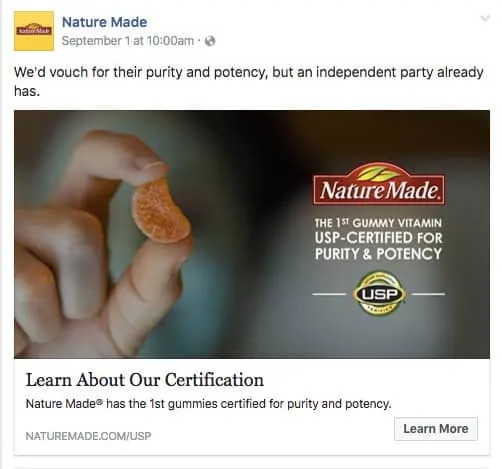Copywriting is both a science and an art form.
To run effectively, companies need to know how to psychologically connect with their audience at the right times, on the correct platforms, with the most compelling offers. Copy is how marketing teams sell a product or service to customers by convincing them that it’s exactly what they need.
While there are many other factors involved in running a successful marketing campaign, from graphic design to SEO and more, no strategy will thrive without compelling copy at its heart. Copy is the thing that gives meaning to design and paves the foundation for SEO, growth hacking, and content marketing results.
Knowing how to write better copy will ensure that you can transform more readers into customers and customers into dedicated advocates for your brand.
Here’s how you can create killer copy in no time.
Step 1: Know What You’re Selling
The first step towards amazing copywriting is understanding exactly what you’re selling. Ultimately, if you don’t know what makes your offering so compelling, then you’re going to have a hard time convincing anyone else to buy it.
Fortunately, you should have plenty of opportunities to dive into the nature of your product or service and figure out what makes it stand out. All you need to do is give yourself the right amount of time to do your homework. Before you begin writing your copy, set aside a few hours where you can work on writing a description of your product. Ask yourself:
- How would you describe this product/service to someone who hasn’t seen it?
- What’s special or unique about what you’re selling?
- What kind of big benefits can this product provide?
- What pains does this product alleviate?
- What features are included in your product, and what do they do to benefit the customer?
Look at this handy bit of copywriting from the Trello website, for instance; it immediately outlines what the solution is and what it does for customers in one neat paragraph:
Because the person responsible for that copy understood Trello and what it does, they could convey the benefits to customers with ease.
Step 2: Get to Know Your Customers
Once you know your product inside and out, the next thing you need to get to know is your customers. Remember, how you go about selling something will depend on who you’re selling it to. The things that motivate a stay-at-home mom to purchase something aren’t always the same as the things that drive Fortune 500 CEOs.
The best copy often excels because the writer knows how to speak their reader’s language. That’s one of the reasons why you should always create at least one user persona before you begin investing in your marketing. To design your user personas, ask:
- Who currently buys your product? What’s their age, gender, job title, location, favorite hobbies, dislikes, likes, and pain points?
- Who would you like to buy your product? Same questions as above.
- What do customers love about your product?
- What do customers dislike about your product or wish you would do differently?
Having an in-depth overview of your customers will make it easier for you to step into their shoes when you’re writing effective copy. Look at how First Round Capital instantly addresses a concern of their target audience, entrepreneurs with the following text. They know that their customers are isolated, so they focus on creating a sense of community. It’s engaging, targeted, and emotional:
Step 3: Know Your Channel and Medium
Once you fully understand who you’re writing for and the messages they’re probably going to respond to in your copy, you can begin to think about where you’re going to be showcasing your copy. For instance, your medium is the pipe through which your copywriting passes – the radio, online websites, social media, and so on are all mediums.
Your channel, on the other hand, is where your audience might encounter your message, such as on their phone or through a forum. Knowing where your audience is likely to interact with your content also has an impact on how you write your copy. After all, different mediums have different rules to consider when you begin writing; for instance, social media generally demands shorter, more concise messages.
Check out how CoSchedule has adapted its Facebook advertising copy to suit the medium they’re using. The message is straight to the point, and directly focused on the benefit that their customers are going to get from clicking the ad:
Because they know who they’re talking to and where their interactions are taking place, they can create an engaging message that’s more likely to hit home.
Step 4: Work on Attention-Grabbing Headlines
While there are many different factors involved in creating copy that converts, few things will be more important than the headlines you write. Ultimately, your headlines are what determines whether someone will actually click on your ads and pay attention to your copy, or simply go elsewhere. To make your headlines as compelling as possible, make sure that they’re:
- Unique: Make sure that you write something that stands out. Don’t just copy and paste what other people are doing. Say something that makes people take notice.
- Specific: You need to get straight to the point with your headlines. Let people know why they should be clicking on your ad.
- Concise: Cut any words out of your headlines that don’t drive action from your audience. Focus on action words like “You,” “Now” and “Here” instead of filler content.
Check out the following headline from the company “Articulate” in the UK below. Their headline stands out because it’s unique, straight to the point, and instantly valuable. They tell you that you’re going to get something special from them, without being overly promotional or complex.
Step 5: Create Copy That’s Persuades
Writing incredible copy is complicated. You don’t just need to have a way with words; you need to create the right connections with people too. Ultimately, success hinges on your ability to convince your customers to do something. That might mean making them download an eBook, asking them to sign up for a newsletter, or even getting them to buy a product.
Learning how to write persuasively takes time, but there are a few things that you can do to kickstart your chances of success. For instance:
- Get your value proposition right: According to research from Nielson, today’s companies only have around 20 seconds to capture a customer’s attention. You need to be able to convey the biggest value of your business, product, or service within that time, instantly. Figure out what makes you special and get it across to your audience as fast as you can.
- Use power words: Some words are naturally more powerful than others when it comes to copywriting. Power words are the terms that are proven to be most effective at engaging your audience; they include words like “Try” or “Opportunity.” Even the word “You” can boost your chances of success by helping you to resonate with your audience.
- Cover the benefits before the features: Finally, remember that your audience wants to know what’s in it for them before they get a complete run-down of a product or service’s features. Focus on getting the benefit across first before anything else.
Look at how Moz quickly highlights the benefit in their service before they cover anything else. Their headline tells customers exactly what they can expect, and it even comes with a bit of social proof attached in the form of a customer review.
After you’ve answered the question “What’s in it for me,” you can move onto a deeper exploration of those benefits by covering the features:
Step 6: Get Emotional
Studies into purchasing behavior prove that we’re more likely to make decisions with our cash based on the way that we feel, rather than what we know. With that in mind, telling a story in your ad copy that touches your customer’s emotional side can be incredibly valuable.
Think about the pain points that you know your customers have, and how your product will help them to overcome those issues. How might your audience members feel when they no longer have to worry about things like time-consuming processes at work because of your new automated app, or they can enjoy more time with family because they’re investing in a cleaning service for their home?
Companies can even appeal to negative emotions too. For instance, rather than addressing how bad people feel about the concept of divorce, a lawyer could say something like “Has your husband been humiliating you? Divorce that fool!”.
One of the most valuable emotions in the ad copy world is “urgency.” Today, nobody wants to miss out on anything. That’s where the feeling of “FOMO” comes out – it’s the overwhelming fear that if you don’t act fast, you’re not going to be able to take advantage of an opportunity. If you can spark urgency in your customers, then you can increase the chance that they’ll do something straight away, rather than dithering over a conversion for weeks at a time.
Look at how Neil Patel creates a sense of urgency with this pop up on his website. However, to make sure that audience members aren’t too freaked out, he also gives them an option to select another date that they can attend his webinar on too.
Step 7: Make Your Content Format Scannable
Today’s consumers are busy people. They don’t have time to deal with complicated long-form content that’s difficult to scan through when they’re ready to make a purchase. While your audience might be fine with long-form content when they’re in the discovery stage of their buying cycle, when you’re writing your ad copy, you’re appealing to people who either ready to buy or eager to find out more.
Scannable content gets your audience moving through the buyer funnel as quickly as possible. Fortunately, there are plenty of ways that you can make your copy easier to consume, such as:
- Using clear headers and sub-headers: You know that your headline is crucial for grabbing attention, but don’t forget that sub-headers are also helpful for driving your customer’s attention down the page.
- Vary text size and color: A giant wall of text is likely to overwhelm your audience and force them to click away from your sales page. Break up the text with different fonts and colors to make it feel easier to read.
- Include plenty of white space: You don’t want your copy to appear cluttered. Spread it out – whether it’s on a Facebook ad, landing page, or anything else, and you’ll find that your customer has an easier time absorbing it.
- Use pictures: Images instantly grab the attention of your target audience and make it easier to understand your ad copy too. Use an image to add context to whatever you’re saying.
Look at this explainer copy from Trello showing customers exactly what they can expect when they sign up for the service. It’s simple, straightforward, and image-rich, perfect for making sure that customers don’t end up feeling overwhelmed.
Step 8: Design the Ultimate CTA (Call to Action)
Whether you’re writing ad copy for a PPC ad, a landing page, a Facebook campaign, or anything else, you’re going to need a call to action to drive your audience to the next stage in the buying cycle.
Your Call To Action needs to give people a reason to click on your link and take the next step in your journey. The best CTAs both tell people what they need to do next and give them a reason to take action too. Make sure your CTAs are:
- Concise and focused: A CTA should focus on one step at a time like “Download your eBook now,” not “Click here, visit our website, and download an eBook.”
- Urgent: Make time a factor, tell people to “Click here Now,” “Download Today” or let them know that time is running out “Deal ends Tomorrow!”
- Benefit-focused: Make sure that your CTA focuses on the value that your audience member is going to get out of clicking. “Download your eBook” “Click here to earn more money,” “Start your free trial today.”
It’s helpful to test your CTAs frequently to make sure that you’re getting the best possible conversion rates. Often, something as simple as the style of button that you’re using, your wording, or even the position of your CTA can be enough to impact conversions.
Look at how Netflix tells you that you can “See what’s Next” by trying a free trial for a month. The CTA is clear, easy to see thanks to a bright red button, and packed with value, so you know what you’re getting.
Step 9: Overcome Customer Objections
Finally, wherever you can, make sure that you’re taking steps to overcome objections that your audience members might have to making a purchase. According to Robert Cialdini’s six principles of persuasion, it’s often much easier to convince someone to do something if you show them that other people have done it successfully first.
In other words, if you want a quick way to show your audience that you’re worth their time, all you need is social proof. Star ratings, testimonials, case studies, or even lists of subscriber counts on your blog are all enough to convince your customers that you’re not the first one that’s taking a risk with them.
Even something as simple as showing that your product has been approved by an industry third-party can be enough to make a huge difference. Check out how Nature Made took advantage of this in their Facebook ad:
With this copy, customers don’t have to worry about investing their cash into food they can’t trust – they know they’re getting something that’s already approved by a specialist.
Another way to make your customers worry less about buying from you is to take advantage of the principle of exclusivity. Make someone feel as though they’ve been hand-selected for a specific deal, and they’ll be far more likely to jump into action. According to Maslow’s hierarchy of needs, we all appreciate being made to feel important.
Getting the Most Out of Your Ad Copy
Ultimately, writing the perfect ad copy takes time and patience.
You’ll need to keep working on your skills, analyzing your campaigns, and optimizing your performance based on what you learn over time. Copywriting is just like any other craft – it’s something you need to hone over time. However, the quicker you begin experimenting with the ideas we’ve outlined above, the easier it will be to start strengthening your position in the market.
Using the 9 steps we’ve outlined above; you’ll be able to discover what it really means to connect with your audience on a deeper level and convince them to take positive actions on behalf of your business. Learn how to speak your customer’s language like this, and the possibilities for what you can accomplish could be endless.

